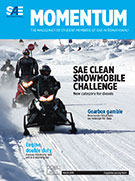Technical Paper
Cyber-security for Engine ECUs: Past, Present and Future
2015-09-01
2015-01-1998
In this paper, we outline past, present and future applications of automotive security for engine ECUs. Electronic immobilizers and anti-tuning countermeasures have been used for several years. Recently, OEMs and suppliers are facing more and more powerful attackers, and as a result, have introduced stronger countermeasures based on hardware security. Finally, with the advent of connected cars, it is expected that many things that currently require a physical connection will be done remotely in a near future. This includes remote diagnostics, reprogramming and engine calibration.











